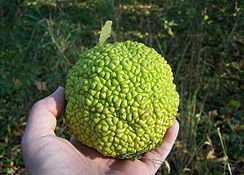Labman
ArboristSite Guru
My book shows Osage orange starting at about Iowa and south to the gulf and east to the coast.


Looks like elm to me
If it gets really light after it dries out its probably slippery elm.
What about pignut hickory?

The bark seems close and you said it was dense stuff. Color seems similar, except most hickories have a greater percentage of sapwood.
Just fishing to help.
I can tell hickory by the smell and how it splits. Any straight grained hickory I have ever split pops open with the first good swing of my maul then requires all the stringy fibers cut with an ax or two strong men fight it apart for the next 5 minutes. I don't cut much elm but I have heard of splitting elm to be similar to this as well. So the pleasant smell of hickory would be the deciding factor. One word little bit of advice if it is hickory, burn it around a year after it was cut and split. Bugs love hickory and you will have lots of dust in a pile of hickory from the bugs eating it and burring up in your firewood. They also pop a lot when you throw them in the fire:msp_wink:
This is out of right field, but you folks don't have any Kentucky coffee trees growing around there do you? There would have been some pods around if it were... Not sure if they grow that far east...
No, I don't think I've ever seen one of those around here, hedge.
 ...
...Then my guess is Eastern hop hornbeam. "Ostrya virginiana" The bark is right. This wood is second in BTU to the Hedge...
And let me guess, it wasn't a very big tree, extremely heavy, relatively straight grain, but still don't split easy?:msp_wink:
AKA.. Ironwood...
Yeah, I've run into a bit of ironwood. That stuff is really dense. The trunk looks like muscles on that, though, doesn't it?
Nope. I've found that certain characteristics of trees differ upon growing conditions and locations.
This is an Eastern Hop hornbeam tree.
Enter your email address to join: